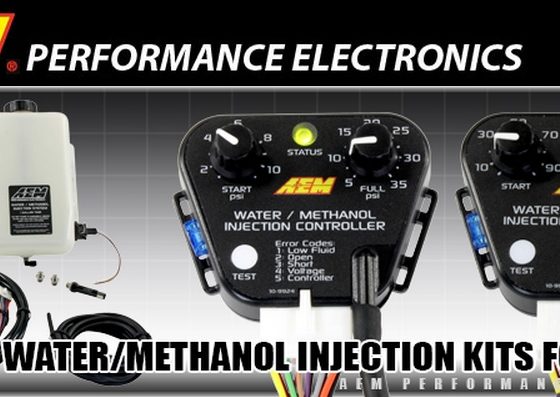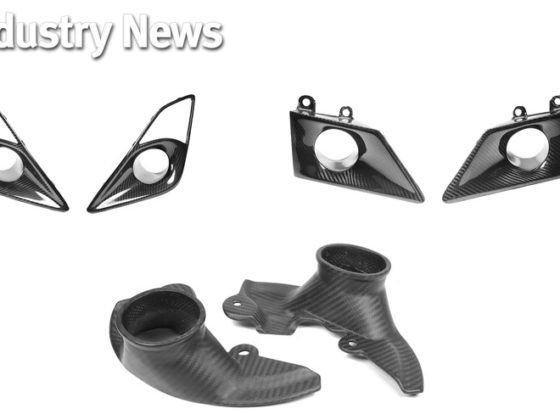Modifying late model Honda/Acura engines is somewhat problematic lately. Take for instance the late model K series engine. Once probably the best naturally aspirated inline four cylinder production engine by far, the K motor in its latest variant, the K24Z7, is a neutered version of its former self. Found in the current 2012 and up Honda Civic Si and the Acura ILX, the K24Z7 still boasts a decent 205 hp and 174 lb ft of torque. This is slightly better power and much better torque than the much acclaimed bone stock K20A2 that everyone knows and loves.
However, the modification potential of the K24Z7 is infinitely less than the older motor. The new engine loses Honda’s famed VTEC system on the exhaust cam side and even worse, has a very inefficient log type exhaust manifold cast as part of the cylinder head. These production changes were probably done to reduce the cost of the engine and improve emissions. Making torque and power through gains in displacement and sacrificing the free revving goodness that the K engine was known for.
The K20A2 was known for its ability to become a 250 whp all motor street screamer with bolt on parts and make gobs more power NA with internal mods. With a 2.4 liter bottom end it was possible to make nearly 300 NA whp on pump gas with daily driver niceness. When turbocharged the engine could produce 400-550 hp in very super streetable pleasant to drive form on pump gas.
Now the question is, can we do this on a late model engine with off the shelf, easily obtainable parts without any exotic work and one off custom parts? We think so and we asked the folks at Motovicity to help us. If you didn’t know, Motovicity is one of the largest wholesale distributors of performance parts in the country with an extensive inventory of performance parts in stock.
We pitched our idea at them, to build the ultimate late model K motor with these constraints. It had to be streetable, built for pump gas, no E85 or race fuel dependent compression ratios or turbo selections, The engine had to be built to be responsive with decent bottom end and manageable turbo lag. We are talking about power that is in by 3000 rpm and strong till 7500 rpm, not a turbo that is just getting started at 5000 rpm and inefficient until you hit 20 psi.
Most of all it had to be built with off the shelf parts, no exotic and custom parts that take months to come, costing mega dollars and are often the downside of building really big power engine. Motovicity not only thought this was a great idea but also opened their entire inventory for us to pick and choose from.
So remember, this isn’t the ultimate import drag race big power build, but it is the ultimate obtainable and daily drivable build. Check it out!
 We started our build with brand new parts fresh from Honda. In retrospect, this probably wasn’t the most practical way to do things because when you buy a head from Honda, it is not a complete head but a bare casting that you have to buy a bunch of separate parts for. Not an inexpensive process at all. For the average person, It’s cheaper to work with complete assemblies sourced used. The first thing that had to go was the stock K24Z7 head with the integrated log exhaust manifold and no exhaust side VTEC. Although you can easily and effectively turbo with the stock head, we wanted to run an efficient turbo manifold to get the most out of our engine. We initially considered the K20A2 head but were concerned about having to deal with oil passage and head gasket compatibility for the VTEC system which controls lift, duration and phasing of the intake cam unlike the stock head that has VTEC and variable phasing only on the intake side. Although this isn’t too big of a deal for us, we wanted to meet our goals with an easy bolt on approach. For an easy bolt on, we chose the K20Z3 head. This is the head found on the 2006-2011 Honda Civic Si. It has VTEC on both the intake and exhaust with variable phasing on the intake side. Another good thing is that it has a conventional exhaust manifold so we can bolt up a trick 4-1 tubular turbo manifold.
We started our build with brand new parts fresh from Honda. In retrospect, this probably wasn’t the most practical way to do things because when you buy a head from Honda, it is not a complete head but a bare casting that you have to buy a bunch of separate parts for. Not an inexpensive process at all. For the average person, It’s cheaper to work with complete assemblies sourced used. The first thing that had to go was the stock K24Z7 head with the integrated log exhaust manifold and no exhaust side VTEC. Although you can easily and effectively turbo with the stock head, we wanted to run an efficient turbo manifold to get the most out of our engine. We initially considered the K20A2 head but were concerned about having to deal with oil passage and head gasket compatibility for the VTEC system which controls lift, duration and phasing of the intake cam unlike the stock head that has VTEC and variable phasing only on the intake side. Although this isn’t too big of a deal for us, we wanted to meet our goals with an easy bolt on approach. For an easy bolt on, we chose the K20Z3 head. This is the head found on the 2006-2011 Honda Civic Si. It has VTEC on both the intake and exhaust with variable phasing on the intake side. Another good thing is that it has a conventional exhaust manifold so we can bolt up a trick 4-1 tubular turbo manifold. The K20Z3 head has the good flowing intake ports that the K series engine is known for. Good flowing ports will enable us to reach our turbocharged power goals without expensive and time consuming porting and head work.
The K20Z3 head has the good flowing intake ports that the K series engine is known for. Good flowing ports will enable us to reach our turbocharged power goals without expensive and time consuming porting and head work. The combustion chamber is a fast burning low included angle design that is very beneficial for turbocharging. The valve seats are hardened which is great for the Supertech Inconel exhaust valves we will be running. The head’s valve seats are pre machined and ready to go but we will be having Portflow Design do a performance valve job with a radiused seat and a deep throat cut. Although is isn’t a fully ported head, it is about the ultimate flowing valve job and perfect for what we want to do with our streetable turbocharged engine.
The combustion chamber is a fast burning low included angle design that is very beneficial for turbocharging. The valve seats are hardened which is great for the Supertech Inconel exhaust valves we will be running. The head’s valve seats are pre machined and ready to go but we will be having Portflow Design do a performance valve job with a radiused seat and a deep throat cut. Although is isn’t a fully ported head, it is about the ultimate flowing valve job and perfect for what we want to do with our streetable turbocharged engine. Here is a closer look at how the Newen cuts a continual smooth radius from below the valve seat, blending the valve seat to the port, up to the valve seating surface itself. An amazing valve job that is difficult to replicate by hand. It is done with 100% repeatability quickly.
Here is a closer look at how the Newen cuts a continual smooth radius from below the valve seat, blending the valve seat to the port, up to the valve seating surface itself. An amazing valve job that is difficult to replicate by hand. It is done with 100% repeatability quickly. The exhaust ports are the good flowing K engine tunnels from years gone past without the dumb integrated exhaust log manifold of the current engine. Turbocharging will more than make up for having stock ports. There isn’t a lot of good information about how this lash up of head to bottom end works as there are a grip of different K motor variations on the net so we will find out!
The exhaust ports are the good flowing K engine tunnels from years gone past without the dumb integrated exhaust log manifold of the current engine. Turbocharging will more than make up for having stock ports. There isn’t a lot of good information about how this lash up of head to bottom end works as there are a grip of different K motor variations on the net so we will find out!



13 comments
Very good write up I just wondered when you switched heads do you have to use k20 head parts or can you use the k24 parts in the new head ?
Yes you can.
What ecu did you guys use go run it i have hear that k pro cannot run it
It depends either K pro or K flash
Hey awesome write up but was there any modifications done to the k20z3 head for the oil passage or is it a straight up pug and play
You need to modify the front cover.
What exactly must be done to the front cover?
You have to weld a piece on to cover a place that is uncovered. It is pretty apparent when you put the cover against the block
How did u mofidy the sensor plates?
I am thinking to do the same for my Accord Euro CU2 (AUS). In US is called Acura TSX 2nd gen. Do you think the K24Z3 block will mate with K20Z3 cyl. head without any modification of the water passage?
I did this with a k20z1 head
https://www.k20a.org/threads/dc4-w-k24z3-tsx-block-k20z1-head-success.227640/
Awesome write up, I would have loved to see dyno numbers of this swap. I also have a k24z2 and I’m trying to find the best head to swap too. I really don’t want to change out all the internals. I’m not finding a lot of write ups for our engine sadly.
I have done this swap. I created a mini nsx engine lol 269.5 hp with 211 torque. All stock internals. Only thing not oem is a mild head port job.
Here is my thread :
https://www.k20a.org/threads/dc4-w-k24z3-tsx-block-k20z1-head-success.227640/